- Home
- entertainment
- news
- The 22 most iconic horror movie villains of all time
The 22 most iconic horror movie villains of all time
Gabbi Shaw
- Horror films are a huge part of pop culture, with their villains becoming nightmare fuel for kids for decades.
- While some villains like Freddy Krueger, Jason Voorhees, and Leatherface have multiple films to get under your skin, others like Annie from "Misery" or Jack Torrance from "The Shining" needed just one movie to earn their spot on this list.
Beginning in the early 1900s with Dracula and Frankenstein's monster, all the way to the Armitage family in "Get Out," horror movie villains have each pushed the genre and terrified us in their own way.
If you're looking for a scary movie to watch this Halloween weekend, look no further: Insider has rounded up the 22 most iconic horror movie villains in history.
Prepare to be spooked.
After Jason Voorhees made his debut in "Friday the 13th Part II," hockey masks were never the same.
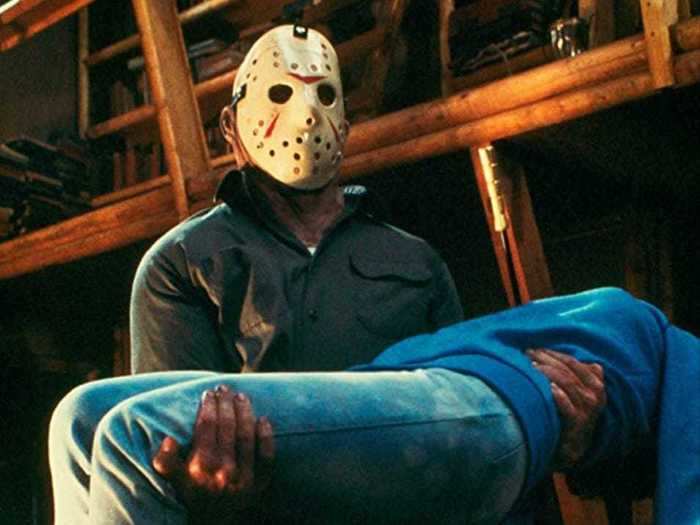
Though the legend of Jason and Camp Silver Lake is first explored in 1980's "Friday the 13th," Jason himself doesn't appear until the sequel, and he doesn't even wear his iconic hockey mask until 1982's "Friday the 13th Part III."
In all, there have been 12 movies about Jason and his unyielding quest for vengeance on teens having sex, and the titles become more and more ludicrous as time goes on (see: "Friday the 13th Part VIII: Jason Takes Manhattan" and "Jason Goes to Hell: The Final Friday.") The most recent movie was the 2009 reboot, "Friday the 13th."
While Jason and his films may err on the side of camp these days, the first three films are genuinely frightening, and his hockey mask has provided many a kid with a Halloween costume.
Freddy Krueger, of the "Nightmare on Elm Street" series, has been making kids everywhere afraid to sleep for decades.
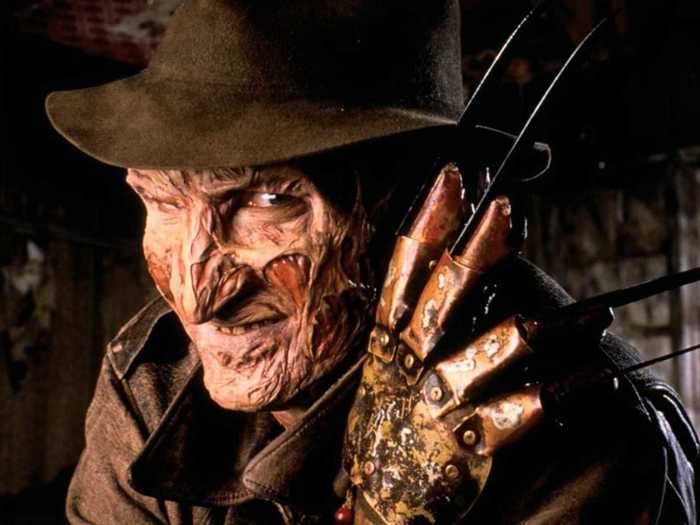
We all know the song, right? "One, two, Freddy's coming for you, three, four, better lock the door," and so on. Beginning with Wes Craven's legendary 1984 film "A Nightmare on Elm Street," viewers have been afraid to fall asleep, just in case Freddy and his razor-claw glove are there to kill them in their sleep.
Freddy's been the star of nine films: "A Nightmare on Elm Street" (1984), "A Nightmare on Elm Street 2: Freddy's Revenge" (1985), "A Nightmare on Elm Street 3: Dream Warriors" (1987), "A Nightmare on Elm Street 4: The Dream Master" (1988), "A Nightmare on Elm Street 5: The Dream Child" (1989), "Freddy's Dead: The Final Nightmare" (1991), "Wes Craven's New Nightmare" (1994), "Freddy vs. Jason" (2003), and the 2010 reboot "A Nightmare on Elm Street."
Annabelle, the demonic doll, plays a small part in "The Conjuring," but proved so frightening that she earned her own spin-off series.
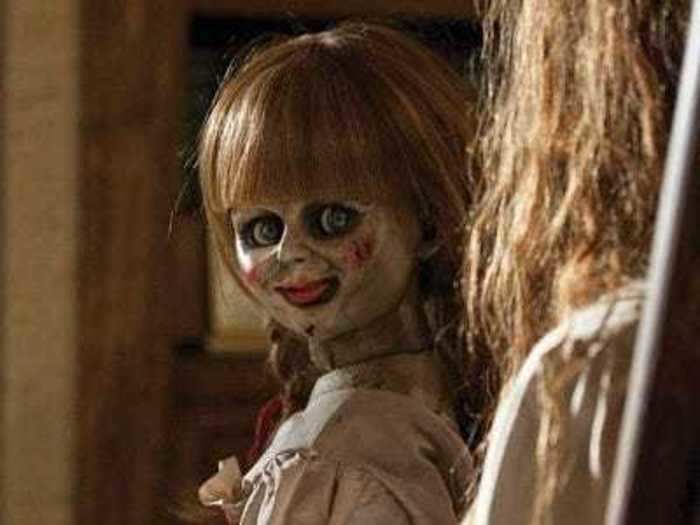
What is it about creepy Victorian-era dolls? Annabelle first appeared in 2013's "The Conjuring" as part of Ed and Lorraine Warren's creepy collection of possessed objects — and she's so powerfully evil that she has to be blessed regularly in order to keep her at bay. Obviously, she breaks free and causes some sheer terror in the Warren household before getting shut back in.
However, she made such an impression that Annabelle has been the center of three of her own films: 2014's "Annabelle," 2017's "Annabelle: Creation," and 2019's "Annabelle Comes Home."
Before we had Annabelle, there was Chucky, the star of "Child's Play."
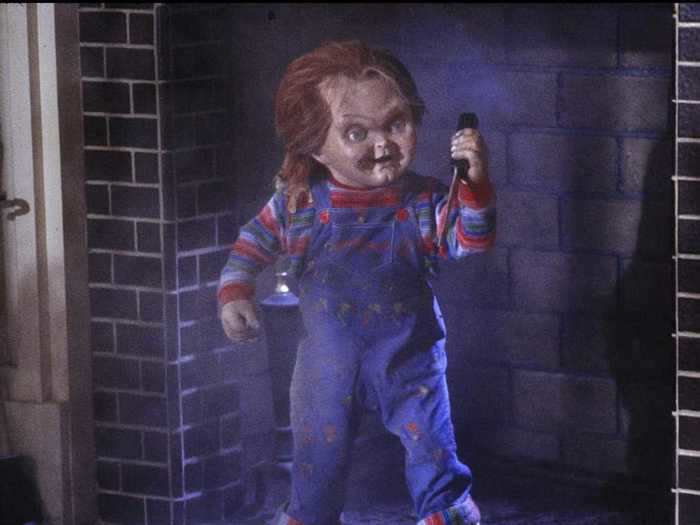
The first "Child's Play" was released in 1988, and focused on a serial killer, Charles, who is magically transferred into the body of a Good Guy doll — of course, just because he's in a Good Guy doll doesn't make Chucky into a good guy.
Chucky fans have watched him wreak havoc on Chicago in eight films: "Child's Play" (1988), "Child's Play 2" (1990), "Child's Play 3" (1991), "Bride of Chucky" (1998), "Seed of Chucky" (2004), "Curse of Chucky" (2013), "Cult of Chucky" (2017), and the 2019 reboot, "Child's Play," which saw Mark Hamill take over as the iconic voice of Chucky.
Facehuggers, Chestbursters, Xenomorphs — whatever you want to call them, the aliens from the "Alien" franchise are not for the faint of heart.
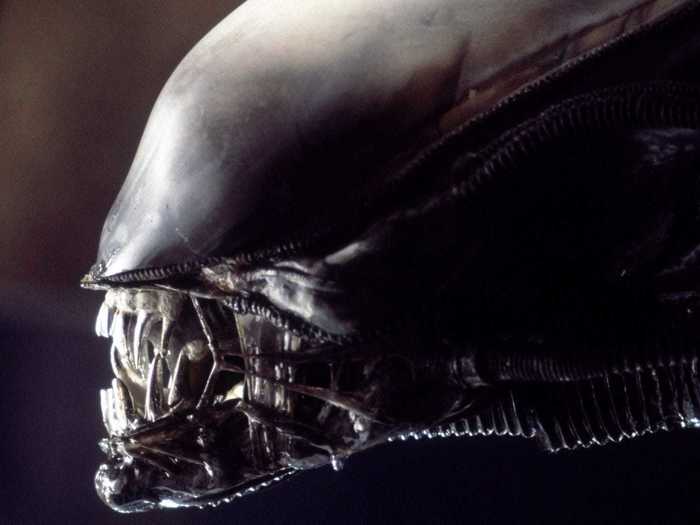
The first "Alien" movie, released in 1979, is a straight-up horror film in a way the rest of the films are not — but no matter what movie they're in, whether it's "Aliens," "Alien3," "Alien Resurrection," "Prometheus," "Alien: Covenant," or either of the "Alien vs. Predator" movies, the Xenomorphs are guaranteed to elicit a jump or gasp from the bravest person you know.
For anyone looking for a little mid-day scare, nothing beats the first chestburster scene from "Alien," a true master class in both tension-building and jump scares.
The Predator is another very scary, very deadly alien that kills its victims in gruesome ways.
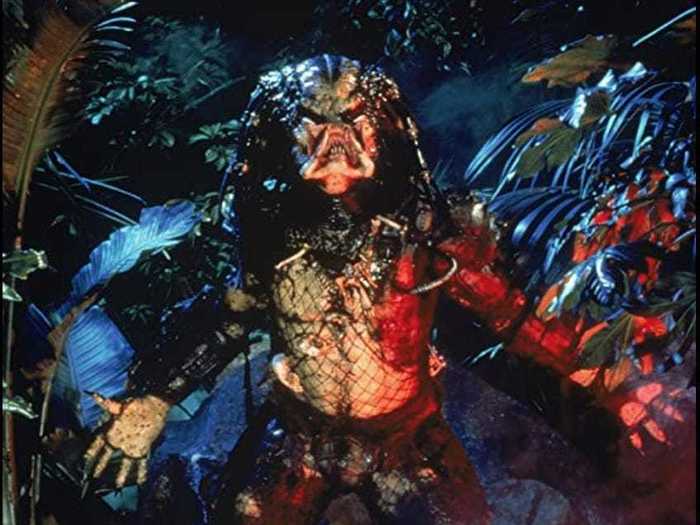
The Predator first appears in 1987's "Predator," which follows Arnold Schwarzenegger as Major Alan "Dutch" Schaefer, a Special Ops officer who is sent to a Central American jungle to rescue a politician and his aide from a hostage situation. Little does Dutch know that he'd soon be dealing with a preternaturally gifted super-alien with heat vision, a bug-like jaw, and the ability to cloak itself.
Predators once again appear in 1997's "Predator 2," 2004's "Alien vs. Predator," 2007's "Alien vs. Predator: Requiem," 2010's "Predators," in which we learn more about their culture, and 2018's "The Predator," which was directed by Shane Black, who had a small part in the original film.
Michael Myers, the seemingly unstoppable killer of the "Halloween" series, has been terrorizing us since 1978.
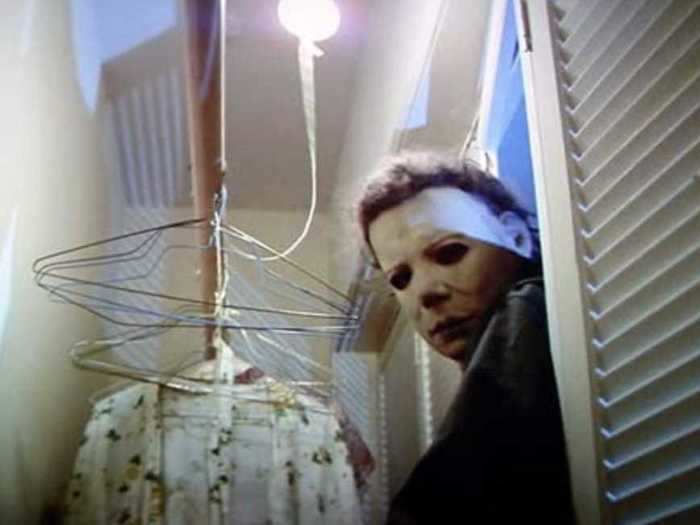
What's so creepy about Michael Myers? Is it his white mask (that's actually an inside-out William Shatner/Captain Kirk mask)? Is it the iconic John Carpenter theme that comes along with him? Is it his obsession with Laurie Strode that makes him unstoppable and unkillable? Most likely, it's a combination of all three.
In total, Michael has been the star of 1978's "Halloween," 1981's "Halloween II," 1988's "Halloween 4: The Return of Michael Myers," 1989's "Halloween 5: The Revenge of Michael Myers," 1995's "Halloween: The Curse of Michael Myers," 1998's "Halloween H20: 20 Years Later," 2002's "Halloween: Resurrection," 2007's "Halloween," 2009's "Halloween II," and the newest reboot trilogy (which has the return of Curtis), 2018's "Halloween," 2021's "Halloween Kills," and 2022's "Halloween Ends."
Yet nothing can dilute the creepiness of the very first film, with Michael walking around in broad daylight stalking Laurie, played by Jamie Lee Curtis.
Second only to Jason's hockey mask is Ghostface's ghoulish mask in "Scream."
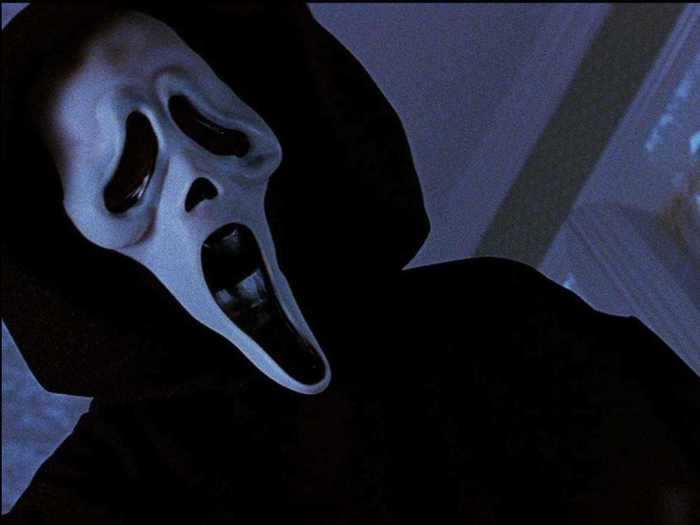
We won't ruin "Scream's" twist for you if you haven't seen it — but if you haven't seen Kevin Williamson's 1996 masterful horror satire: Run, don't walk. Any fan of horror or teen movies will be delighted by Sidney Prescott and her friends' quest to stay alive by following the "rules" of horror movies.
"Scream" was followed by four sequels. In each movie, Neve Campbell's Sidney tries to escape Ghostface (the mantle is taken up by different killers each movie): 1997's "Scream 2," 2000's "Scream 3," 2011's "Scream 4," and the upcoming "Scream 5" which is set to be released in 2022.
"Scream" was also turned into an MTV anthology horror series which followed two more groups of teens trying to escape Ghostface. It aired for three seasons from 2015 to 2019.
All Leatherface needed was a chainsaw to make his way into the Horror Film Villain Hall of Fame.
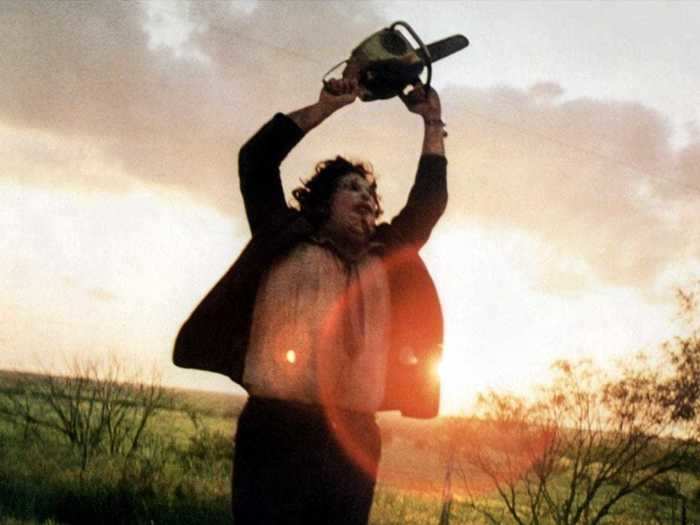
Leatherface, first seen in 1974's "The Texas Chain Saw Massacre," is a serial killer who likes to wear a mask made out of the skin of his victims. Enough said.
The slasher genre would not be the same without "Texas Chain Saw Massacre." It established many staples of the genre, from the villainous hitchhiker, cannibals, and the lone creepy gas station, all things that would pop up in "The Hills Have Eyes," released three years later.
The chain saw-wielding murderer would appear again in 1986's "The Texas Chainsaw Massacre 2," 1990's "Leatherface: The Texas Chainsaw Massacre III," 2003's "The Texas Chainsaw Massacre," 2006's "The Texas Chainsaw Massacre: The Beginning," 2013's "Texas Chainsaw 3D," and 2017's "Leatherface."
Norman Bates, the villain of "Psycho," has since become shorthand for "sociopath."

"Pyscho," the classic 1960 horror film directed by Alfred Hitchcock, is so ingrained in our culture that it's easy to take for granted just how groundbreaking (and terrifying) it truly is. The shower scene, with its iconic score, remains one of the most chilling murders in horror movie history, and made more than a few people reluctant to hop in the shower, unable to see if anyone else was joining them in the bathroom.
What makes Norman, played by Anthony Perkins, such a good villain is, of course, how subversive he is. He appears to be a meek motel owner who is constantly getting belittled by his mother, but of course, he's actually a twisted killer.
"Pyscho II," released in 1983, picks up 22 years later after Norman is released from a psychiatric hospital. He once again stars in 1986's "Pyscho III." Perkins played Norman one last time in 1990's made-for-TV film "Psycho IV: The Beginning."
However, Norman lived on in Gus Van Sant's 1998's shot-for-shot remake, this time played by Vince Vaughn. An A&E prequel series, "Bates Motel," explores Bates' childhood, and he's played by Freddie Highmore. The critically acclaimed show lasted for five seasons.
Jack Torrance in "The Shining" will stay with you for a long time after finishing the film.
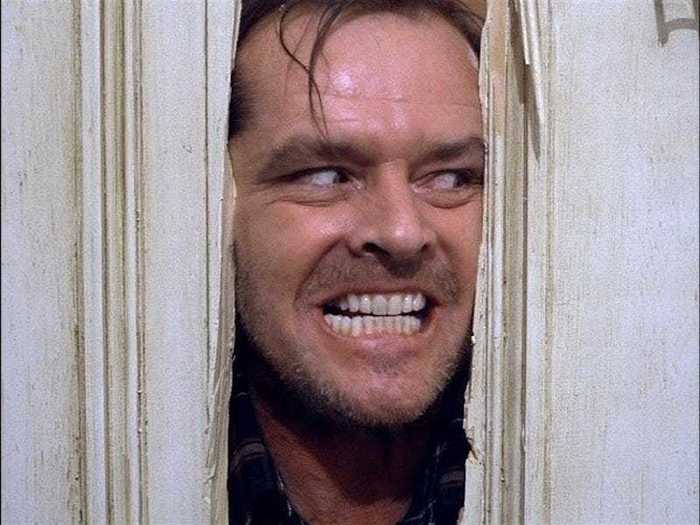
"The Shining" (1980) is the story of one man's descent into madness as he experiences writer's block and an unconquerable case of cabin fever — plus, he's stuck in the notoriously haunted Overlook Hotel, is battling alcoholism, is seeing ghosts, and only has his wife and young son to speak to. Jack's relentless pursuit of his son Danny throughout the frozen maze gives us all nightmares.
The film, a Stephen King adaptation, is one of the most analyzed films of all time, culminating with the 2012 documentary "Room 237," which is all about different theories regarding the movie and its meaning.
Jack Nicholson doesn't appear in the 2019 sequel "Doctor Sleep" — another actor plays Jack Torrance — it's still just as unsettling.
While Regan isn't technically a villain, the demon Pazuzu that possesses her in "The Exorcist" is enough to give anyone nightmares.

"The Exorcist," released in 1973, remains unsettling to this day. It doesn't matter that the special effects haven't aged that well, or that it takes awhile for things to really get going — by the time Regan's head spins around and she starts cursing out her mother, you've been on edge for so long it feels like you might just snap.
Pazuzu, the ancient demon that takes over innocent Regan's body, has one of the most unnerving voices of any horror movie villain, and the way Pazuzu forces Regan to act easily earns its spot on this list.
Regan and Pazuzu returned for 1977's "Exorcist II: The Heretic." Pazuzu is once again part of "The Exorcist III" in 1990, "Exorcist: The Beginning" in 2004, and most likely will be the villain of the 2021 remake.
After seeing Damien in "The Omen," parents all over the world began taking a closer look at their kids.
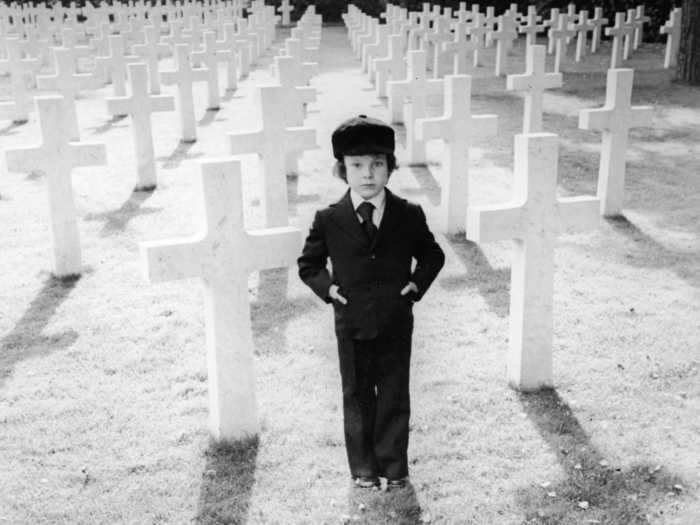
"Look at me, Damien! It's all for you!" Has there ever been a more iconic beginning to a film? After Damien's babysitter jumps off a roof and hangs herself at his birthday party, viewers knew they were in for something different watching 1976's "The Omen."
Damien might be the original "Creepy Kid" that now seems to permeate most horror films, but Harvey Spencer Stephens' blank-faced portrayal of Damien, the Antichrist and harbinger of death and destruction, still remains atop the list.
Damien appeared in both sequels, 1978's "Damien: Omen II" and 1981's "Omen III: The Final Conflict," though he was played by Jonathan Scott-Taylor and Sam Neill, respectively. He also appeared in the 2006 reboot, played by Seamus Davey-Fitzpatrick.
Before he was a gay icon, Mister Babadook was a character in a mysterious storybook with the power to possess people.
"The Babadook," a 2014 Australian horror film, has a glowing 98% on Rotten Tomatoes, proving that it's more than just another scary movie.
Something that sets apart Mister Babadook from other horror villains, is that he's barely on-screen — he mainly appears in the storybook that Essie and and her son Sam read as a manifestation of their grief for Sam's dad. Almost all of his other hijinks are performed by an unseen presence, save one terrifying nightmarish sequence in which he possesses Essie.
Now, for the gay icon bit. It all started in 2016, when a Tumblr user joked that the Babadook is gay. This led to a (doctored) screenshot that showed "The Babadook" on Netflix categorized as an LGBT film. Now, the community has claimed him as an unofficial Pride mascot.
One of the most frightening images in modern horror is Billy, a puppet, biking around his warehouse of horrors.
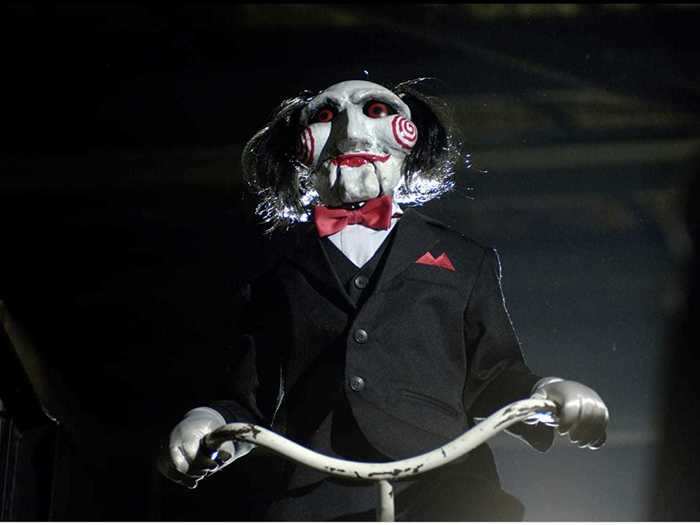
James Wan's 2004 instant classic "Saw" introduced us all to the Jigsaw Killer, a man who created horribly violent experiments testing various victims' will to live. One of the main ways that Jigsaw communicates with his prisoners is through Billy, a puppet that Jigsaw originally created as a gift for his unborn son, who died before he was born.
Now, Jigsaw uses Billy to unnerve his captors with his creepy face, bull's-eye cheeks, and deep voice. He's a mainstay of the franchise, and has been in "Saw," 2005's "Saw II," 2006's "Saw III," 2007's "Saw IV," 2008's "Saw V," 2009's "Saw VI," 2010's "Saw 3D," and 2017's "Jigsaw." He'll most likely appear in 2021's "Spiral," as well.
Pennywise from "It" no doubt sparked a fear of clowns in many of his viewers.
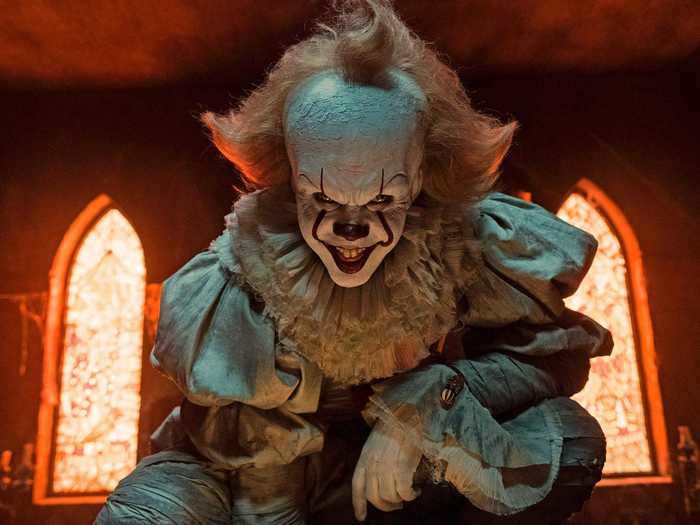
Whether you're more partial to Bill Skarsgård's performance in "It" and "It: Chapter Two," or Tim Curry's version of the character in the 1990 ABC miniseries, we can all agree that Pennywise, the clown iteration of It, an ancient evil entity that must eat children to survive and preys upon our fears, is horrifying.
Although the end of Stephen King's story shows that standing up to your fears is the only way to truly overcome them ... we'd still run the opposite way if we ever saw Pennywise dancing his way towards us.
Annie Wilkes in "Misery" isn't supernatural, but she's chilling all the same.
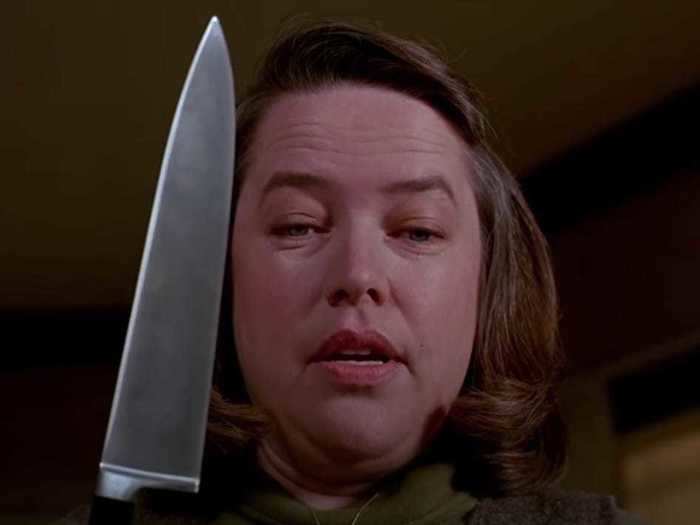
Maybe Annie's lack of demonic possession and supernatural powers make her scarier than anyone else on this list. She's dangerously obsessed with author Paul Sheldon, and commits atrocities in order to keep him with her. Kathy Bates even won an Oscar for her portrayal of Annie.
The scene in which Annie breaks both of Paul's ankles so he can't escape was even voted one of Bravo's 100 scariest movie moments.
Hannibal Lecter of "Silence of the Lambs" has made sure we'll never see Chianti or fava beans the same way ever again.
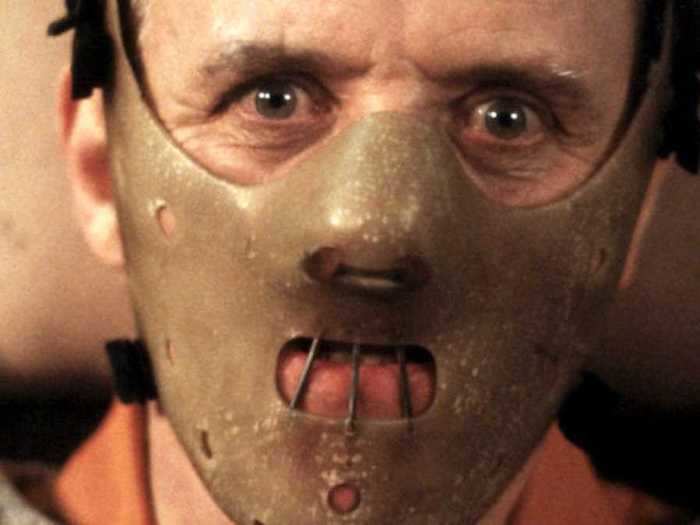
Although Hannibal isn't the only antagonist of 1991's "The Silence of the Lambs," this liver-eating cannibal is the one that sticks with you. His strange monotone voice, his frightening mask, and and his genius-level intellect all pull you in, much like they pull in Agent Clarice Starling.
For better or worse, Hannibal will be the defining role of Anthony Hopkins' career — it won him an Oscar. He continued to play the character in two more films (2001's "Hannibal" and 2002's "Red Dragon"), before getting replaced in 2007's prequel "Hannibal Rising," in which the cannibal is played by Gaspard Ulliel.
In 2013, Mads Mikkelsen began playing him in the NBC series "Hannibal," which lasted for three seasons.
The original vampire is, of course, Dracula.
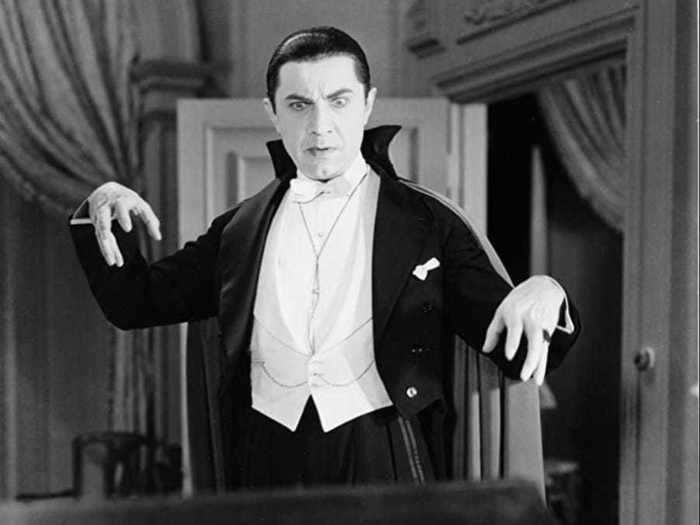
Count Dracula first appeared in Bram Stoker's 1897 gothic horror novel, "Dracula." And ever since, people have been under the thrall of the vampire and his mythology. The Transylvanian has been the subject of multiple novels, plays, and films, most famously 1931's "Dracula," 1970's "Count Dracula," 1979's "Dracula," 1992's "Bram Stoker's Dracula."
Arguably, we owe "Twilight," "The Vampire Diaries," "Buffy the Vampire Slayer," and more to our fascination with Dracula.
Frankenstein's monster is a tragic villain, but still one of the most recognizable symbols of Halloween.
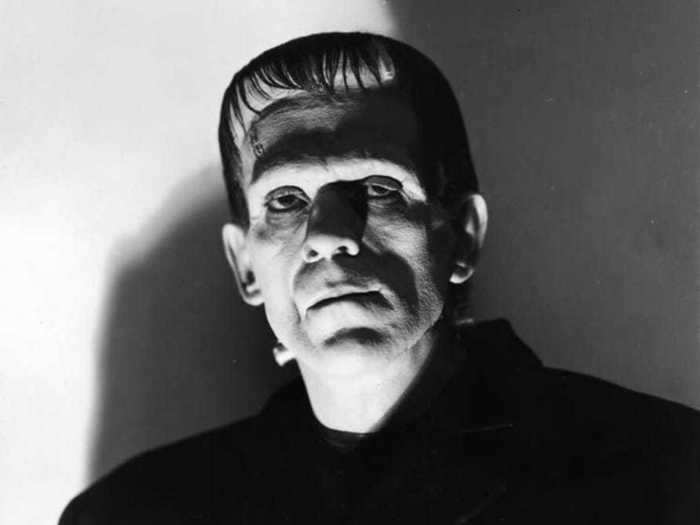
Frankenstein's monster is a tragic figure. He's a reanimated hodge-podge of a person who questions the existence of his reality and his right to happiness. He first appeared in Mary Shelley's classic 1818 novel "Frankenstein, or the Modern Prometheus," and has since appeared in dozens of other works, including multiple movies, cartoons, TV shows, and books.
"Get Out" would not have been the same without the chilling Armitage family.
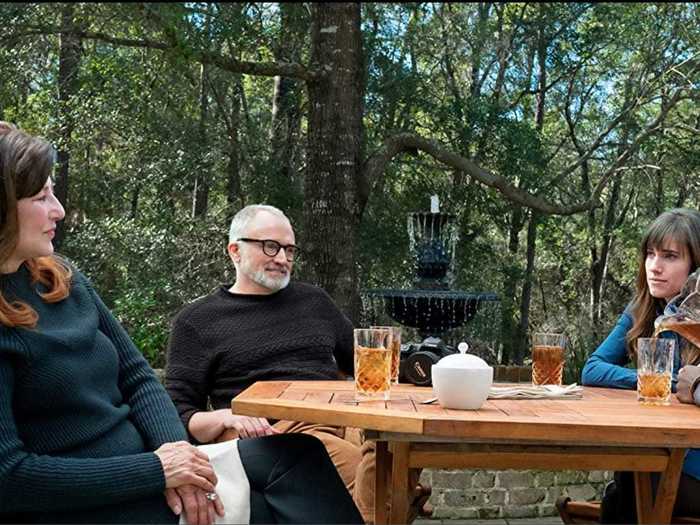
Catherine Keener, Bradley Whitford, Allison Williams, and Caleb Landry Jones all came together for 2017's "Get Out" to play the Armitage family — a family that lures in Black people in order to hypnotize them and steal their bodies for a twisted kind of immortality.
From Whitford's casual "I'd vote for Obama for a third time if I could" to the chilling way Williams eats her cereal and milk separately, the casual racism and white saviorism of the Armitages would've been horrible enough — but once things kick into high gear and Daniel Kaluuya's character Chris has to start killing them, you'll find yourself cheering.
"Get Out" came at a time when mainstream horror was in a slump, and director Jordan Peele's "social thriller" essentially revitalized the genre, establishing him as the modern king of horror.
Whatever you do, don't say the Candyman's name five times in a mirror.
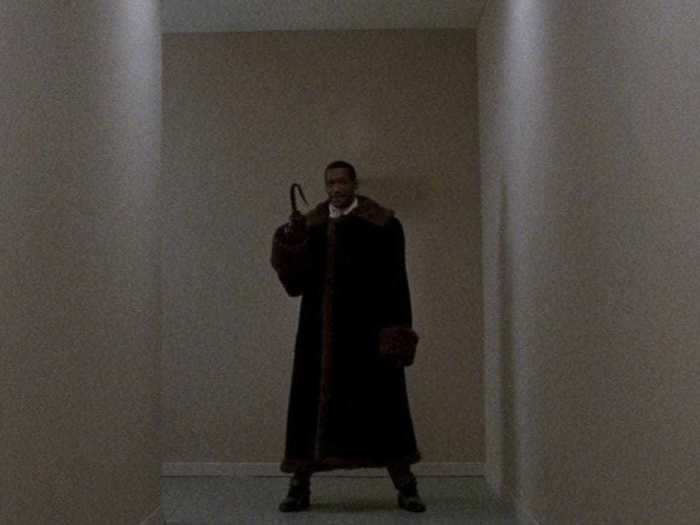
In many ways, "Get Out" would not have existed if not for 1992's "Candyman," a film focused on racism, social inequality, and poverty. The titular Candyman is an urban legend — the story goes that he is the spirit of the son of a slave who was murdered via bees for his relationship with a white woman. Now, if you say his name five times in a mirror, a man with a hook for a hand will appear and murder you — oh, and he has a rib cage full of bees.
"Candyman" spawned two more sequels," 1995's "Candyman: Farewell to the Flesh," and 1999's "Candyman: Day of the Dead." A remake produced by none other than Jordan Peele and directed by Nia DaCosta is set to be released in 2021.
READ MORE ARTICLES ON
Popular Right Now
Popular Keywords
Advertisement